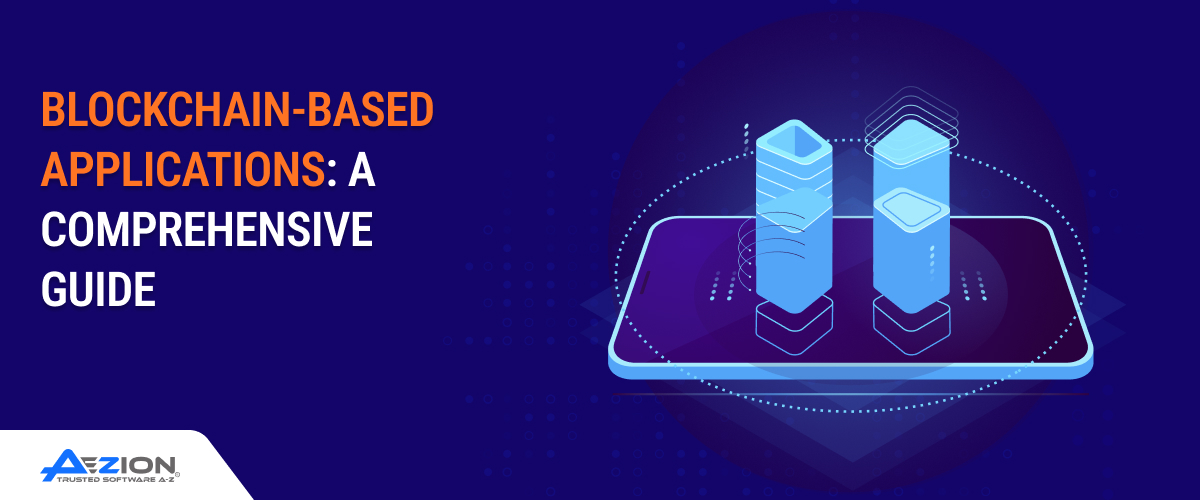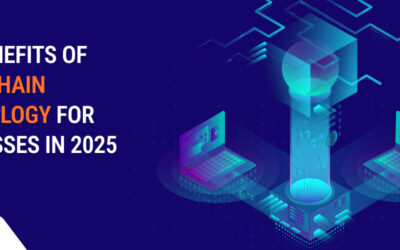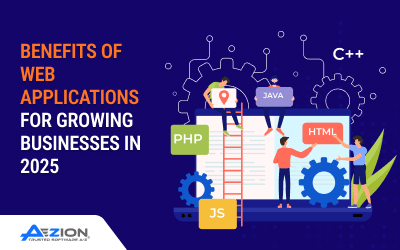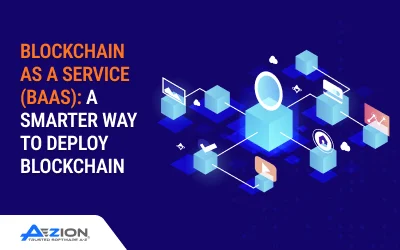Summary
From transparent supply chains to decentralized finance, blockchain-based applications rapidly redefine how industries exchange data, verify authenticity, and build trust. These applications are no longer just theoretical; they’re reshaping healthcare, finance, logistics, and public services with real-world utility. As adoption deepens, the applications of blockchain technology are becoming integral to digital innovation.
Introduction
Blockchain began with Bitcoin, but its real potential lies far beyond cryptocurrency. As a foundation for real-world blockchain applications, it reimagines how systems record, share, and validate information. Decentralized architecture, immutability, and cryptographic trust make it a compelling backbone for modern digital solutions across the public and private sectors.
What Are Blockchain-Based Applications?
Unlike traditional apps that rely on centralized servers, blockchain-based applications operate on distributed networks where data is verified collectively. These applications utilize smart contracts, cryptographic validation, and peer consensus to execute logic securely. Whether public or permissioned, they bring transparency, autonomy, and auditability to digital interactions across finance, healthcare, and logistics sectors.
Key Components of a Blockchain Application
At their core, blockchain-based applications rely on smart contracts, distributed ledgers, and consensus algorithms. These elements work together to validate actions, secure data, and eliminate central points of failure, enabling trustless, verifiable interactions in both consumer-facing and enterprise systems.
1) Smart Contracts
Smart contracts are code-driven agreements that execute actions automatically when predefined conditions are met. They eliminate manual oversight, reduce transaction delays, and ensure consistency, making them central to most blockchain-based applications involving finance, supply chains, gaming, and decentralized identity.
2) Distributed Ledger
A distributed ledger maintains a consistent, append-only database across multiple real-time nodes. Every transaction is permanently recorded, cryptographically sealed, and time-stamped. This ensures transparency, reduces data manipulation, and creates a shared source of trust between parties operating on the blockchain.
3) Consensus Mechanism
Consensus mechanisms like Proof of Work, Proof of Stake, or Practical Byzantine Fault Tolerance enable decentralized networks to agree on the validity of transactions. These algorithms maintain order, prevent double-spending, and secure the blockchain without relying on centralized authorities or intermediaries.
4) Tokens/Assets
Tokens are digital units representing currency, ownership rights, access credentials, or in-app utility. Depending on the application, these assets may be fungible or non-fungible and can be traded, staked, or burned based on smart contract logic.
5) Nodes
Nodes are the fundamental infrastructure of any blockchain network. Each node stores a copy of the ledger, validates transactions, and participates in consensus. Their decentralized distribution ensures system resilience, data redundancy, and protection against tampering or single-point failures.
Types of Blockchain Applications
The scope of blockchain use cases has expanded far beyond cryptocurrencies. Today’s applications span finance, healthcare, logistics, energy, and more each leveraging blockchain’s core strengths: trust, transparency, and decentralization. Below are key categories where real-world blockchain applications actively drive disruption and value.
1) Decentralized Finance (DeFi)
DeFi applications enable users to borrow, lend, trade, and earn interest on digital assets without traditional banks. Built on smart contracts, they remove intermediaries, reduce fees, and democratize access to financial services, pushing blockchain into the core of future banking systems.
2) NFTs and Digital Ownership
Non-fungible tokens allow unique digital art, music, and gaming assets to be owned, sold, or licensed securely. By embedding ownership rights on-chain, NFTs provide creators and collectors a transparent, verifiable way to track provenance and monetization in digital ecosystems.
3) Supply Chain and Provenance Tracking
Blockchain brings visibility and trust to supply chains by recording product journeys from origin to end user. Every transaction or checkpoint becomes traceable, reducing fraud, counterfeits, and delays, especially in industries like food, pharmaceuticals, and high-value goods.
4) Healthcare and Medical Records
Patient data stored on blockchain ensures secure, permissioned access across hospitals, labs, and insurers. It reduces duplication, supports accurate diagnoses, and preserves data integrity, building stakeholder trust and giving patients more control over their health records.
5) Identity and Access Management
Blockchain-based identity systems give users control over their credentials without relying on central authorities. Decentralized Identifiers (DIDs) and verifiable credentials enhance privacy, reduce data breaches, and simplify application verification processes like onboarding, eKYC, and secure logins.
6) Voting and Governance
Blockchain enables transparent, tamper-proof voting systems. Whether in political elections or decentralized autonomous organizations (DAOs), each vote is recorded immutably, counted accurately, and protected from manipulation, restoring public trust in democratic and organizational processes.
7) Energy and Utility Management
Peer-to-peer energy trading platforms on blockchain allow users to buy or sell excess energy directly. It supports local grid optimization, promotes renewable adoption, and creates new market structures that are both efficient and decentralized.
8) Real Estate and Land Registry
Tokenization and blockchain-based land records reduce fraud, speed property transfers, and create immutable ownership history. These applications simplify complex legal processes and build transparency in real estate transactions, especially in markets prone to title disputes.
Benefits of Blockchain-Based Applications
The true power of blockchain-based applications lies in how they reshape trust and efficiency across digital systems. By replacing centralized control with cryptographic verification, blockchain reduces errors, cuts delays, and ensures data authenticity, offering strategic advantages to enterprises and end users.
1) Tamper-Proof Transactions
Once data is recorded on the blockchain, it cannot be altered without consensus. This immutability protects against fraud and unauthorized changes, making it ideal for environments where data integrity is critical, such as financial transactions, legal records, and compliance audits.
2) Improved Data Integrity
Every transaction is traceable and verifiable, creating a reliable audit trail. This transparency ensures data accuracy and consistency across participants, even when trust is limited, helping organizations align data governance with real-world accountability.
3) Real-Time Verification
Blockchain allows instant validation of transactions across the network. This eliminates delays caused by intermediaries, speeds up settlements, and supports real-time decision-making, especially in fast-paced sectors like logistics, fintech, and supply chain management.
4) Lower Intermediary Costs
By automating trust through code, blockchain removes the need for third-party validators, notaries, or escrow services. This results in leaner operations, faster workflows, and substantial cost savings, especially for cross-border transactions or complex contractual agreements.
5) Enhanced Security and Privacy
Blockchain uses cryptographic algorithms and distributed nodes to secure data from tampering or unauthorized access. With private keys and permissioned access, users retain control over their information without compromising security.
6) Decentralized Control
Unlike traditional systems, blockchain use cases distribute authority across participants. This reduces single points of failure, mitigates systemic risks, and promotes shared governance, making applications more resilient and transparent from the ground up.
Industries Actively Using Blockchain-Based Applications
Blockchain’s real-world impact isn’t theoretical; major sectors already use it to streamline processes, reduce risk, and create more trustworthy systems. These real-world blockchain applications reshape how industries manage value, identity, and information with scalable and secure digital infrastructure.
1) Finance and Banking
Banks use blockchain for cross-border payments, digital identity, and clearing systems. It reduces settlement times from days to seconds, lowers fraud risks, and enables financial inclusion through decentralized services like stablecoins and smart contract–powered lending platforms.
2) Healthcare
Hospitals and research centers are adopting blockchain to store patient records, track pharmaceuticals, and secure clinical trial data. It ensures data consistency, protects privacy, and enables seamless access between patients, providers, and insurers.
3) Retail and eCommerce
Retailers integrate blockchain for inventory tracking, counterfeit prevention, and loyalty programs. Customers can verify product authenticity and origin, while businesses gain real-time supply chain visibility and improved inventory accuracy.
4) Logistics and Transportation
Shipping firms use blockchain for freight tracking, customs documentation, and route optimization. Each step is recorded immutably, enabling smoother coordination between carriers, warehouses, and regulators, reducing delays and paperwork.
5) Government and Public Services
Governments leverage blockchain for identity verification, benefit disbursement, and land record management. These systems reduce corruption, simplify bureaucratic processes, and increase the transparency of citizen services and legal frameworks.
6) Entertainment and Media
Content creators use blockchain to manage digital rights, distribute royalties, and protect intellectual property. Smart contracts ensure fair compensation, while NFTs enable new monetization models across music, film, and gaming.
Challenges in Building Blockchain Applications
Despite their promise, blockchain-based applications come with complex design and implementation hurdles. Technical limitations, regulatory uncertainty, and user adoption barriers can slow progress. To succeed, businesses must navigate these challenges while balancing innovation with scalability, compliance, and long-term sustainability.
1) Scalability Limitations
Most blockchain networks struggle with high transaction volumes, leading to latency and increased costs. Scaling enterprise-grade apps becomes difficult without layer-2 solutions or alternative consensus models, especially when real-time performance is critical.
2) High Energy Consumption
Specific consensus mechanisms, like Proof of Work, demand massive computing power. This raises environmental concerns and operational costs, making energy efficiency a key consideration in custom blockchain development.
3) Regulatory Ambiguity
Laws governing blockchain vary across countries and are still evolving. Navigating compliance requires ongoing legal evaluation and flexible design, especially for finance, healthcare, and identity use cases.
4) Integration with Legacy Systems
Most enterprises still rely on outdated infrastructure. Connecting blockchain networks with existing databases and workflows demands significant reengineering, custom APIs, and careful migration strategies.
5) User Adoption and Education
Blockchain’s unfamiliar interfaces and terminology can confuse users. Building trust, simplifying onboarding, and providing clear value are essential to drive adoption, especially in public-facing applications or consumer markets.
How Aezion Helps You Build Blockchain-Based Applications
At Aezion, we don’t just build software—we engineer trust-driven digital systems. Our work in blockchain-based applications is grounded in real business needs and aligned with our promise: We Get It Right. We Make It Right. From architecture to long-term support, we guide you through every stage of blockchain adoption.
1) Tailored Blockchain Architecture
We assess your goals and environment to select the right blockchain type and design a structure that supports scale, speed, and compliance without compromise.
2) Secure Smart Contract Engineering
Our teams write, test, and audit smart contracts precisely, ensuring your business logic is protected against vulnerabilities, gas inefficiencies, and bad actors.
3) Human-Centered Design
We turn complex blockchain workflows into clean, usable interfaces delivering intuitive user experiences without sacrificing the integrity of decentralized systems.
4) Enterprise System Integration
Whether it’s your CRM, ERP, or legacy databases, we integrate blockchain into your operations seamlessly eliminating silos and enabling end-to-end visibility.
5) Ongoing Optimization and Support
From security patches to performance tuning, Aezion provides proactive support to help your blockchain applications evolve with your business.
Future of Blockchain-Based Applications
The future of blockchain-based applications is not speculative; it’s already forming around interoperability, AI convergence, and enterprise-grade adoption. As trust becomes a digital currency, blockchain will underpin critical systems that demand transparency, automation, and shared control across diverse networks and ecosystems.
1) Interoperable Blockchains
Next-gen applications will connect across multiple chains, enabling assets and data to move freely between networks. This eliminates fragmentation and supports more collaborative digital ecosystems.
2) Enterprise Blockchain Maturity
Large-scale businesses are moving from pilots to production. More sectors will adopt enterprise blockchain solutions for identity, compliance, and secure data exchange, driving broader transformation.
3) Convergence with AI and IoT
Blockchain will increasingly intersect with AI and IoT. Together, they’ll power autonomous systems to audit themselves, make decisions, and verify real-time interactions.
4) Regulatory Clarity and Standardization
As laws catch up, global standards will emerge, making it easier to innovate without legal uncertainty. This will boost confidence for both developers and enterprises.
Conclusion
The push for transparency, security, and decentralized control is becoming foundational as digital ecosystems evolve. Blockchain-based applications are not just emerging; they enable trusted, verifiable systems across finance, healthcare, logistics, and more. With Aezion as your Digital Engineering Solutions Company, you gain more than technology; you gain a partner who gets it right and makes it right, every step of the way.
Frequently Asked Question:
1) What are blockchain-based applications used for?
Blockchain-based applications are used for secure data sharing, decentralized finance, identity verification, supply chain transparency, and asset tokenization. They replace centralized intermediaries with distributed trust, enabling faster, tamper-proof processes across banking, logistics, healthcare, and real estate industries.
2) How are smart contracts used in blockchain applications?
Smart contracts are self-executing code that runs on blockchain networks. They automate business logic, executing agreements, triggering payments, or verifying outcomes without manual input. Blockchain-based applications power everything from lending platforms to digital identity systems with speed, security, and transparency.
3) What are some real-world blockchain applications?
Examples of real-world blockchain applications include cross-border payment systems, NFT marketplaces, electronic health record sharing, supply chain monitoring tools, and decentralized voting platforms. Each leverages blockchain’s transparency, traceability, and immutability to solve real business problems.
4) What are the biggest challenges in building blockchain applications?
The main challenges include scalability limits, integration with legacy systems, regulatory uncertainty, energy consumption, and user adoption. These factors require careful planning and often the support of a specialized digital engineering company with blockchain experience.
5) How can Aezion help my business with blockchain?
Aezion designs, builds, and maintains custom blockchain-based applications tailored to your business needs. From architecture and smart contract development to integration and ongoing support, we ensure your blockchain systems are secure, efficient, and aligned with your long-term goals.



